NIGHTLORD40K
Member
Interesting, I've used both the Garand Gear and Shuster plugs and didn't notice any accuracy issues.We installed one in my friends Garand.........Accuracy went to terrible with every load we shot.
Interesting, I've used both the Garand Gear and Shuster plugs and didn't notice any accuracy issues.We installed one in my friends Garand.........Accuracy went to terrible with every load we shot.
Garand Gear has a chart on their website wherein they tested many commercial loads with a specially modified piston plug containing a piezo sensor. There were a few loads that fell within the port pressure of M2 ball, but most greatly exceeded it.Where are the preasure studies you keep referring to. I simply don't believe you. Powders burn at different rates so the preasure and volume of gas at the port simply can't be the same with every powder used. Simply not possible. Don't recall any single person that agrees with you. Can someone please back this ranting person up. It's like reading words from a raving lunatic writing about the world coming to an end. The ranting person might be right but is anyone listening. I don't trust rude loudmouth right or wrong. So my Garands get ammo that matches their age group and I use the same in my bolt test gun to great success. Hodgdon, Hornady, NRA and my own research is what I trust. Will someone with people skills and a high school writing level please prove this person right. He needs help. Really.
Coffee and sunlight cause my accuracy issues.Interesting, I've used both the Garand Gear and Shuster plugs and didn't notice any accuracy issues.
Too much work to be fake news .Garand Gear has a chart on their website wherein they tested many commercial loads with a specially modified piston plug containing a piezo sensor. Their were a few loads that fell within the port pressure of M2 ball, but most greatly exceeded it.
How about you leave the personal attacks out of it and prove your point that commercial ammo is dangerous.Where are the preasure studies you keep referring to. I simply don't believe you. Powders burn at different rates so the preasure and volume of gas at the port simply can't be the same with every powder used. Simply not possible. Don't recall any single person that agrees with you. Can someone please back this ranting person up. It's like reading words from a raving lunatic writing about the world coming to an end. The ranting person might be right but is anyone listening. I don't trust rude loudmouth right or wrong. So my Garands get ammo that matches their age group and I use the same in my bolt test gun to great success. Hodgdon, Hornady, NRA and my own research is what I trust. Will someone with people skills and a high school writing level please prove this person right. He needs help. Really.
Yep.....Doesn’t the Quickload computer game show port pressure?
Yep...and they only tested a few military loads including the weak late 60s m2 ball.Garand Gear has a chart on their website wherein they tested many commercial loads with a specially modified piston plug containing a piezo sensor. There were a few loads that fell within the port pressure of M2 ball, but most greatly exceeded it.
Maybe it's just fake enough to give you just enough data to be convinced you need to buy the product they are trying to sell you....Too much work to be fake news .
Even better cheaper idea...Ok, how bout this for the OP.
1) FMJ kills stuff, but it's neither optimized for game nor legal for hunting everywhere.
2) True military surplus ball ammunition is getting rare and even when you find it is, at best, 40-50 years old at this point as well as having corrosive primers and potentially degraded/ unstable powder.
3) Commercial hunting ammunition is expensive and new production commercial FMJ ammunition loaded to M2 specs is rare and even more expensive.
4) Adjustable gas plugs are cheap, easy to install, and MAY provide extra protection from damaging the rifle while using readily available commecrial SP hunting ammunition. Any hunting rifle should be test fired for reliability and sighting in before taken afield.
5) The best answer is to roll your own using a trusted hunting bullet loaded to military specs. The second best answer is use commercial hunting ammo and a gas plug. The third best is new FMJ (assuming it's legal), and the worst idea is using old surplus M2.
Lubriplate was the go to lube issued in the '50s. There are newer, supposedly better in use today, but I prefer to dance with the gal that brung me. This video is about as good as any, although, I prefer to wipe the op rod w/lubriplate and I do not put any lube on the hammer hooks or trigger sear. A drop or two of oil on the hammer spring plunger is a good idea, as well. For op-rod health the bolt lug recess and belly of the barrel, as well as op-rod spring and follower rod also good idea.Lots of good info. Thanks for everyone's thoughts.
"Properly grease your rifle.."
Is there a good resource on this? Ill admit I don't even know how to get to the op rod and spring. All ive ever done is oil the action and shot them. My current gun hadn't been shot in 30 years so it's probably dry.
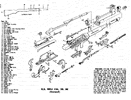
There, I fixed it for you.Again I keep repeating myself.... commercial ammo has the same port pressure as military ammo.
Milsurp ammo has a wide range of port pressure... commercial ammo also has a wide range of port pressure, some of which falls into this range.
The oprod is a weak link.... improper or lack of lubrication can causes issues with the oprod.
From my personal experience(s) (70 years) with care and feeding Garands, and that which I recall which was supported by the DCM when I purchased my M1 from them in 1984*, was that the rifle should be fed US M2 Ball (then in plentiful supply from DCM & elsewhere).Dear CMP Family,
The CMP advises to not use .30/06 ammunition in M1 Garands, 1903s, and 1903A3s that is loaded beyond 50,000 CUP and has a bullet weight more than 172-174gr. These rifles are at least 70 years old and were not designed for max loads and super heavy bullets. Always wear hearing and eye protection when firing an M1 Garand, 1903 and/or 1903A3 rifle.
This warning is an update/addition to the Ammunition section in the Read This First manual enclosed with each rifle shipment (M1 Garand manual-page 6 and M1903 manual-page 10).
Civilian Marksmanship Program
Some interesting information on development of M1 Garand and it's ammo from the cave man's Google:** A theory never becomes a fact. It is an explanation of one or more facts. A well-supported evidence-based theory becomes acceptable until disproved. It never evolves to a fact, and that's a fact.

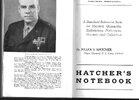
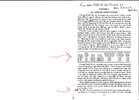
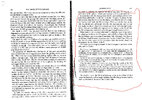
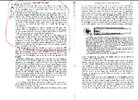
Sorry I forgot to address this point in my last post.Again I keep repeating myself.... commercial ammo has the same port pressure as military ammo.
Milsurp ammo has a wide range of port pressure... commercial ammo falls into this range.
The oprod isn't the weak link.... improper or lack of lubrication is what causes issues with the oprod.
There, I fixed it for you.
Now for the CMP ammo suggestions; I spent over an hour searching the CMP web site and googled M1 ammo. The only thing I uncovered from the CMP was this undated quotation. Perhaps this is the "new" wisdom, IDNK?? If so, could it be due to the scarcity of even foreign made M2, again IDNK.
From my personal experience(s) (70 years) with care and feeding Garands, and that which I recall which was supported by the DCM when I purchased my M1 from them in 1984*, was that the rifle should be fed US M2 Ball (then in plentiful supply from DCM & elsewhere).
Furthermore, as I recall, DCM has gone to great lengths until quite recently, after US M2 stocks were depleted, to purchase M2 ball manufactured in Taiwan and other foreign sources in order to be able to supply this (recommended) ammo for the M1 rifles they provided. This indicates to me, the importance they placed on using M2.
Also, having participated in service rifle competition with the M1 for the better part of 20 years (guestimate as I cannot recall when eyesight forced me to switch to the bolt gun). During that period of time, the accepted theory** advanced by most, if not all competitors was that use of ammo other than M2 Ball, M72 Match or handloads to those standards was detrimental to the life of op-rods. I can assure you that most, if not all of the rifles used by these competitors received proper care and lubrication. The "standard" load for these competitors was 47 gr. 4895 behind a 150 gr. SMK , which duplicated M2 or same charge behind 168 gr SMK for M72, using USGI brass.
* In the interest of full disclosure, I previously stated the I paid $98 for this rifle; the actual price was $94.30.
Some interesting information on development of M1 Garand and it's ammo from the cave man's Google:
View attachment 1194979
View attachment 1194980
View attachment 1194983
View attachment 1194984
and from the same source Gen. Hatcher's evaluation of the strength of Garand Receivers..........
View attachment 1194985
You have fallen into the trap most internet "bloggers" and "garand authors" (and even some ammo makers) have. You have confused the CUP vs PSI readings.Sorry I forgot to address this point in my last post.
Which "commercial ammo has the same port pressure as military ammo"?
Since no one knows what powder any ammo manufacturer is using in their product, it is impossible to know the burn rate of that powder. Slower powders loaded to a given breech pressure (40-50,000 # for ammo which the M1 was designed for) will produce a higher port pressure than the powders with a faster burn rate as was prescribed for M1 and M2 ball according to data from Gen. Hatcher. Again, it is the port pressure we are concerned with, not the breech pressure here.
Yep, we all knew the proper nomenclature but most referred to the "gas plug" (which it is by function, if not proper name).
JCG called it the screw, gas cylinder lock. The gas cylinder plug goes on the gas trap and is different.Yep, we all knew the proper nomenclature but most referred to the "gas plug" (which it is by function, if not proper name).
Since no one knows what powder any ammo manufacturer is using in their product this month...Since no one knows what powder any ammo manufacturer is using in their product,
The garand was made to SAAMI specs and follows that regarding chamber pressure specs.
Never said it wasn't designed for ball...Since no one knows what powder any ammo manufacturer is using in their product this month...
it seems smart to shoot "imitation army surplus" ammo or to load your own.
One of those Garand Load brands is listed at 2750 fps while 150 gr JSPs are pushing 3000 fps. The extra 200 fps has to come from somewhere.
hps1 has already made my point, the M1 rifle was designed for the M1 cartridge. Obviously the chamber and port pressures had to be suitable.
The US Army is not a member of SAAMI. This dogged us for years, leading to claims that the .308 Winchester was loaded to substantially higher pressures than 7.62 NATO because the Army still calibrated a crusher gauge in psi, not adopting the CUP nomenclature.
I never purchased any ammo from (DCM) CMP, I tend to use them interchangeable); do recall they sold a lot of Greek, now that you mention it, but my point is that they went to great lengths to provide foreign manufactured M2 rather than choosing US made commercial ammo. Of course, cost could be a large factor in that choice, as well.Neat books you have the same ones I do...
In short the reason they went looking for M2 ball is because that's ALL they could import into the country. AP and tracer are prohibited. They didn't get any from Taiwan they did get it from Greece however and other European countries.
DCM ceased to be in 1998 IIRC and you must mean CMP.
Your charge of 47.0 4895 duplicated "some" loads of M2. M2 ball was made by many factories/countries over a 50+ year span. The loadings are not all identical and they vary quite a bit in pressure and charge weight..
4895 wasn't even used in US ammo until around 1944.
Cost was a main factor....always is...I never purchased any ammo from (DCM) CMP, I tend to use them interchangeable); do recall they sold a lot of Greek, now that you mention it, but my point is that they went to great lengths to provide foreign manufactured M2 rather than choosing US made commercial ammo. Of course, cost could be a large factor in that choice, as well.
I ran our club's DCM program for 10-12 years. Before that I ordered quite a bit of Taiwan M2 ball that was touted as being "reloadable brass cases" which made it a bargain. It was decent ammo, quality brass, boxer primed, but their primers were .002-.003" larger than our 210's so not such a bargain after all.
'98 sounds about right.....it was DCM for a long time; it was during Clinton's administration.
Been loading a long time, but even I was not loading in 1944, so will take your word for that being the year they started using 4895.
Not sure why a gas plug would hurt accuracy.We installed one in my friends Garand.........Accuracy went to terrible with every load we shot.
